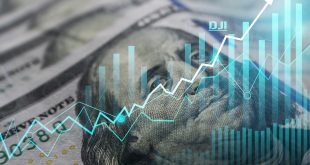The Consumer Price Index published on Friday by the Bureau of Labor Statistics hiked by 8.6% from a year ago, up from April’s reading of 8.3% and higher than economists had projected.
Federal Reserve policymakers tasked with bringing prices back down could likely to take clues from May’s CPI report on how aggressively they need to raise interest rates to mitigate inflation that shows no signs of abating.
Inflation continued to surge in May, increasing at the quickest pace in 40 years as consumers face rising challenges at the gas station and grocery store.
Core goods inflation picked up sharply on a month-on-month basis as car prices started to rise again – this may speak to a re-intensification of global supply-chain pressures. And services inflation just keeps heading north driven by rents (shelter costs) – this is probably the clearest sign we have of inflation broadening and starting to becoming embedded and something the Fed cannot ignore.
Wall Street reactions came in fast and furious after the data. Some economists argue that the May reading are the clearest sign markets have of inflation broadening and starting to becoming embedded. While the pick-up in the headline CPI inflation rate to 8.6% y/y from 8.3% y/y in April was all explained by food and energy, the striking aspect was the continued strength in core inflation on a month-on-month basis (at 0.6%).
As inflationary pressures persist and the labor market shows signs of slowing, stagflation, an economic condition in which the growth rate slows and inflation remains high, could be on the table for next year. Should markets fear stagflation? No, not in 2022, but the risks will be much greater in 2023. In the face of lingering inflation, rising interest rates and slower global activity, US companies will likely curb hiring and small businesses will be on the forefront of this slowdown.
The US economy and the labor market are entering this economic slowdown from a robust position, and companies are looking to build resilience in the face of global economic and geopolitical uncertainty. This will likely mean retaining strong talent, instead of proceeding with severe layoffs.
Stagflation risk is real and we may already be there. Inflation is running hot and the last GDP print was negative. To some, our economy may feel very much like we have stagflation, with higher prices and slowing consumer confidence. One can easily draw a scenario where supply shocks continue to push inflation higher despite a hawkish Federal Reserve tightening monetary policy.
Stepping back, US citizens are struck by the fact that there were almost no pockets of weakness in this report. The data are consistent with our view that inflation is no longer just a function of goods supply-chain disruptions. Inflation is also being driven by strong consumer demand because of a red hot labour market and strong wage inflation.
Accordingly, inflation has become embedded in the more cyclical service sectors as well. The Federal Reserve officials are likely to ramp up interest rates more aggressively than anticipated after Friday’s print. While many market participants were looking for inflation pressures to begin to cool, the latest CPI continues to show the opposite. Many Americans are feeling the pain with headline CPI rising to a four-decade high of 8.6%.
There was nowhere to hide from higher prices in May. With consumer inflation at another 40+ year high, it is clear that inflationary pressure is not fading and may be gathering steam in response to repeated global supply shocks. The initial interest rate hikes by the Fed this spring have done little to slow down the inflation train so far, but further sharp tightening should be coming soon.
This report kills any hope that the Fed could pivot to [a 25 basis point hike] in July, but markets remain hopeful for September, on the grounds that the next two core CPI prints will be lower than May’s; the three jobs reports will show that wage gains continue to moderate; and because by the time of the September meeting, the housing meltdown will have everyone’s attention, and continuing to hike by 50bp will look gratuitous.
Not only was the CPI print higher than expected on almost all fronts, pressures were clearly evident in the stickier parts of the market as well. The decline in inflation will be painfully slow. The Fed’s price stability resolve is going to be really tested now. Policy rate hikes will need to relentlessly aggressive until inflation finally starts to fade, even if the economy is struggling. Any chance of a Fed put, already very low, has been “put” firmly to bed.

 Noor Trends News, Technical Analysis, Educational Tools and Recommendations
Noor Trends News, Technical Analysis, Educational Tools and Recommendations




